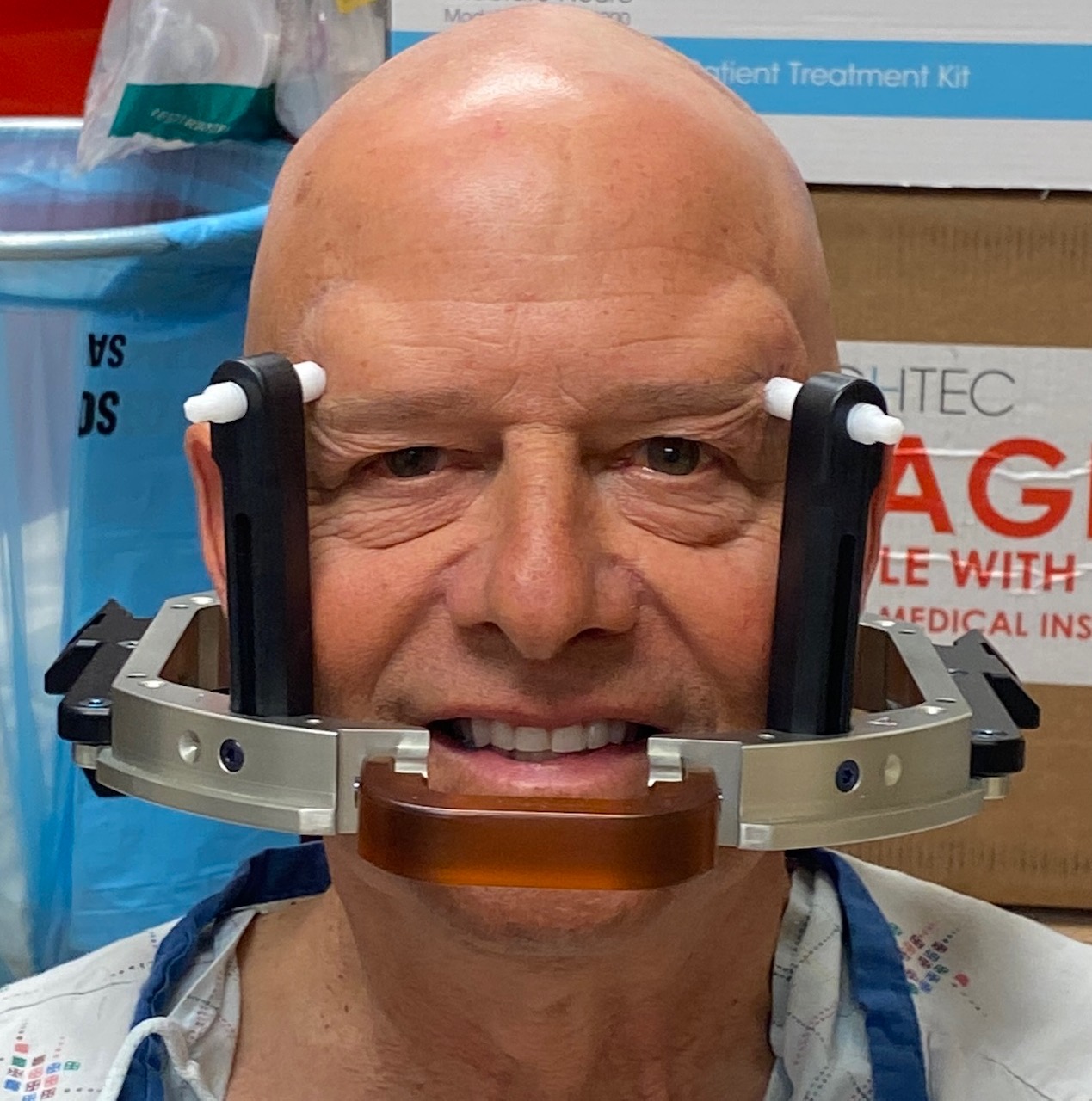Over 15 years ago, Rick Bruder was diagnosed with essential tremor, a condition that can cause uncontrollable shaking in the hands, head, voice, and even legs. Rick, like many people with essential tremor, experienced minor shaking in his hands at first. Over time, the tremor progressed to the point where his right hand shook “like I’d drunk 20 cups of

coffee every day,” he shared. Every aspect of his life was affected. “I couldn’t hold a glass without using both hands,” Rick said. “When we’d spend time with friends, my wonderful wife would have to make up a plate for me as if it were normal; I couldn’t even prepare any kind of meal myself without making a mess.”
After struggling with medications that did nothing to ease his symptoms but did make it difficult to get out of bed in the mornings, Rick spoke with Heather Wisner, nurse coordinator for focused ultrasound at the University of Utah Health, about other treatment options. Rick had heard of deep brain stimulation for essential tremor but knew that it was not the ideal option in his situation; instead, he and Heather discussed focused ultrasound ablation, a procedure where high-intensity ultrasound energy burns a small section of the brain to reduce the tremor.
Rick was interested in the procedure but had many questions and concerns. “I was quite nervous about having my brain ablated,” Rick shared. “I wasn’t nervous about it not working, but I was nervous that they might miss or that something might go wrong and more than the necessary part of my brain would be ablated. I questioned if I would lose my ability to speak or think, which was not an enjoyable thought.” Rick was introduced to Dr. Shervin Rahimpour a functional neurosurgeon who specializes in treating essential tremor and other movement disorders.
“Dr. Rahimpour was very kind, informative, and

reassuring. He and Heather spent a great deal of time explaining the whole process to me in detail,” Rick said. “It was very comforting. He explained that there’s no hit-and-miss to the procedure and that everything is very precise. I appreciated his explanation of the procedure, but even more important was getting a sense of who Dr. Rahimpour is as a person. He was so personable and made me feel very comfortable. He didn’t feel at all clinical or detached, which I appreciated.”
When the day of the procedure came, Rick had to have his head shaved. “I’d never been bald before, so I almost didn’t recognize myself. After I was shaved, Dr. Rahimpour fitted me with the apparatus, and got to work. Before long, we were done. I was awake the whole time. In fact, I was very involved throughout the whole procedure, including before and after surgery. There was only one moment when the procedure was painful, and Dr. Rahimpour warned me beforehand that they were going to use the ultrasound very intensely, so there might be some discomfort. I’ve had a number of surgeries before, but I’ve never felt so comfortable during one.”

After the surgery was completed, Rick was given a couple of band-aids and discharged from the hospital. “About an hour after the surgery, I ate soup with a spoon for the first time in 10 years,” Rick said.
“It was a little overwhelming because I didn’t have to think so hard or worry about where the soup would end up. My wife took a video of me the night before the surgery and then another one while I was eating the soup; the difference was incredible. The tremor in my right hand was gone.”
“I have a slight tremor in my non-dominant, left hand. It was always there, but because the tremor in my right hand was so bad, I hardly noticed my left. I wouldn’t hesitate to go back to get the left side done if needed; the only thing holding me back would be having to shave my head again,” Rick shared.
Although the procedure is minimally invasive, there is a recovery period which includes transient symptoms. For example, Rick experienced temporary speech issues that are now back to baseline. He also had temporary diminished taste and imbalance. “I’d take all of those temporary side effects again to no longer have the tremor,” he said. Rick is back to mountain biking, skiing and hiking. “In fact, I feel younger now than I did before the surgery. It’s been truly life changing,” he shared, “and I finally have a full head of hair again!”
